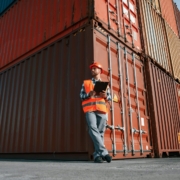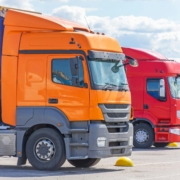Simplify Logistics: Making Container Transport Effortless in South-East Queensland
Efficient logistics are the backbone of any thriving business in South-East Queensland. By making container transport effortless, companies can ensure smooth operations and focus on what truly matters—growing their business. This not only saves time but also significantly reduces costs, making a huge difference in overall productivity.
Smooth logistics lead to faster turnaround times and fewer delays, which means happier customers. When deliveries are reliable and timely, customer satisfaction levels soar. This reliability fosters trust and loyalty, setting the stage for long-term growth and success.
Streamlined logistics don’t just benefit businesses; they also have a broader impact on the economy. When companies operate efficiently, they contribute to a healthier economic environment. Goods move seamlessly from one place to another, boosting commerce and ensuring everyone stays connected. By simplifying container transport, businesses in South-East Queensland can thrive and achieve their full potential.
Importance of Streamlined Logistics for Businesses
Efficient logistics are essential for businesses in South-East Queensland. Smooth operations mean that goods move quickly and predictably from one point to another. This precision helps businesses maintain a steady flow of products, preventing delays and disruptions. When logistics are streamlined, companies can meet customer demands promptly, ensuring satisfaction and loyalty.
Smooth logistics also save time and reduce costs. By optimising routes and schedules, businesses can lower fuel and labour costs. Less time spent on the road translates to faster deliveries, reducing the need for extensive storage solutions. Cost savings can then be reinvested into other areas of the business, such as innovation or marketing, fostering further growth.
Customer satisfaction plays a crucial role in business success. When logistics are efficient, customers receive their orders on time, enhancing their overall experience. Happy customers are more likely to become repeat buyers and recommend the business to others. This positive feedback loop drives business growth and strengthens the brand’s reputation. Streamlined logistics thus contribute significantly to both operational efficiency and customer satisfaction, leading to sustained business success.
Key Features of Effective Container Transport
Successful container transport relies on several key features. Firstly, standardisation is crucial. Using standard container sizes ensures compatibility across different transport modes, such as ships, trucks, and trains. This uniformity simplifies the loading and unloading process, reducing handling times and minimising the risk of damage to goods.
Technology also plays a critical role. GPS tracking and real-time monitoring offer transparency and control over the transport process. Businesses can track their shipments and accurately predict delivery times. This level of visibility ensures that any issues can be addressed promptly, preventing delays and reducing losses.
Proper planning and execution are vital to making container transport seamless. Detailed route planning ensures that the most efficient paths are taken, avoiding traffic and other delays. Scheduling is carefully managed to ensure that containers are picked up and delivered on time. Coordination among different logistics partners, from port authorities to trucking companies, ensures smooth transitions and uninterrupted service.
Effective container transport hinges on these key elements, ensuring goods are transported efficiently, safely, and on time.
Overcoming Common Challenges in Container Transport
Container transport faces several common challenges that can disrupt smooth operations. One major hurdle is dealing with delays at ports, which can occur due to congestion or insufficient infrastructure. Delays can have a ripple effect, impacting delivery schedules and increasing costs for businesses.
To address these delays, companies can adopt smarter scheduling practices, selecting off-peak times for shipments to avoid congestion. Investing in real-time tracking and communication systems also allows companies to quickly adapt to unforeseen delays by rerouting shipments or adjusting delivery times.
Another challenge is the risk of damage to goods during transit. Goods can be subject to rough handling or adverse weather conditions. Businesses can mitigate these risks by using high-quality containers and ensuring proper packing methods. Regular maintenance of transport equipment and training staff on best handling practices also play a crucial role in safeguarding shipments.
Security is another significant concern. Containers can be vulnerable to theft or tampering. Enhanced security measures like seals, locks, and surveillance can help protect goods. Implementing robust tracking systems ensures that any suspicious activities are detected early, allowing for swift action to prevent losses.
By overcoming these challenges, businesses can ensure more reliable and efficient container transport, leading to cost savings and improved customer satisfaction.
Future Trends Shaping Container Transport
Several future trends are set to transform container transport, making it even more efficient and reliable. One major trend is the adoption of green technologies. More companies are investing in eco-friendly fuels and energy-efficient vessels to reduce their carbon footprint. This shift not only benefits the environment but can also lead to cost savings in the long term.
Advancements in infrastructure are also playing a pivotal role. Smart ports with automated systems for loading and unloading containers can significantly reduce turnaround times. These ports use cutting-edge technology to streamline operations, making the entire logistics chain more efficient.
Another exciting trend is the integration of artificial intelligence and machine learning in logistics. These technologies can predict demand, optimise routes, and manage inventories more effectively. AI-driven analytics can also provide insights into potential issues before they become problems, allowing businesses to stay ahead of the curve.
Blockchain technology is gaining traction in container transport as well. By offering secure and transparent transactions, blockchain can ensure that all parties have access to real-time data, reducing administrative errors and enhancing trust.
These trends promise to simplify container transport even further in South-East Queensland, allowing businesses to operate more efficiently and sustainably.
Conclusion
Container transport plays a crucial role in the operational success of businesses in South-East Queensland. Efficient logistics ensure timely delivery, reduce costs, and enhance customer satisfaction, paving the way for business growth. By focusing on key features like standardisation, technology, and proper planning, companies can make their transport processes seamless.
Addressing common challenges such as delays, damage to goods, and security concerns is vital for maintaining smooth operations. Adopting proactive measures can mitigate these risks, ensuring that goods reach their destinations safely and on time.
As we look to the future, advancements in green technology, smart infrastructure, AI, and blockchain are set to revolutionise container transport. These innovations promise greater efficiency, reduced environmental impact, and enhanced transparency, making logistics even more effortless.
Streamlined logistics can transform your business. Choose DNV Transport for all your South-East Queensland container transport needs and experience seamless, efficient operations. Let us help you simplify logistics and drive your business towards success.











